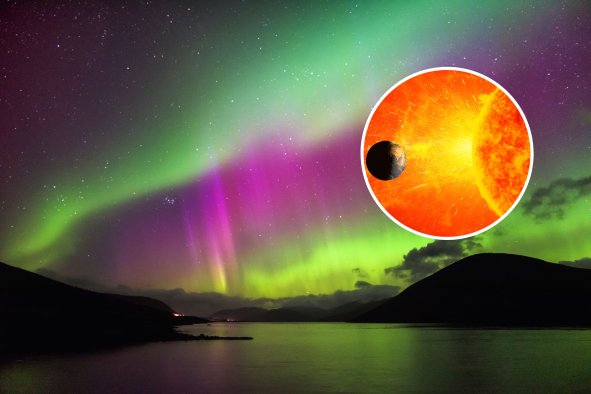Scientists have suggested saving life on Earth by keeping it on the moon in a modern space-age Noah's Ark.
This "lunar biorepository" could store cryopreserved samples from the most endangered species on Earth to protect its biodiversity, according to a new paper in the journal BioScience.
The samples would be protected from Earth-based issues, ranging from natural disasters and climate change to geopolitical conflicts, by virtue of being far away, on the moon.
This out-of-this-world solution was proposed by researchers at the Smithsonian's National Zoo and Conservation Biology Institute, suggesting that Earth's most at-risk species could be preserved long into the future.
"Because of myriad anthropogenic drivers, a high proportion of species and ecosystems face destabilization and extinction threats that are accelerating faster than our ability to save these species in their natural environment," the researchers wrote in the paper.
According to the International Union for Conservation of Nature (IUCN) Red List, over 45,300 species worldwide are threatened with extinction, comprising 28 percent of all 163,040 species we have assessed.
They list over 18,000 species as "endangered" and a further 10,000 as "critically endangered." Some groups of animals are more at risk than others; 41 percent of amphibian species and 37 percent of sharks and rays are threatened with extinction, compared to 26 percent of mammals and 12 percent of birds.
The researchers suggest storing cryopreserved animal skin samples and fibroblast cells, which are a type of cell found in connective tissue throughout the body. They have begun testing starry goby (Asterropteryx semipunctata) samples to see if the cryopreservation technique will work.
Cryopreservation is a process used to preserve cells, tissues, or entire organisms by cooling them to very low temperatures. At these temperatures, biological activity, including biochemical reactions that would lead to cell death, is effectively stopped.
Before freezing, biological materials are treated with cryoprotectants, substances that protect cells from damage during the freezing process. The material is then cooled slowly to an extremely low temperature, which helps to prevent the formation of ice crystals that can damage cell structures.
The researchers suggest that the moon provides the ideal location for storing these materials, as it is very cold in certain regions near the poles, rarely exceeding -321 degrees Fahrenheit. This could allow for less energy to preserve the samples and less human intervention.
Of course, this lunar ark is a long way off. The researchers note that several challenges include keeping the samples safe during space transport, international collaboration, and the effects of cosmic radiation. However, one day, the moon may house the last bastions of some of our most endangered species.
Do you have a tip on a science story that Newsweek should be covering? Do you have a question about endangered species? Let us know via science@newsweek.com.
Disclaimer: The copyright of this article belongs to the original author. Reposting this article is solely for the purpose of information dissemination and does not constitute any investment advice. If there is any infringement, please contact us immediately. We will make corrections or deletions as necessary. Thank you.



